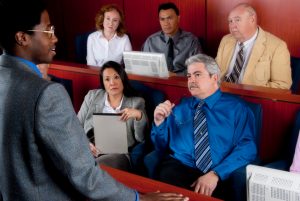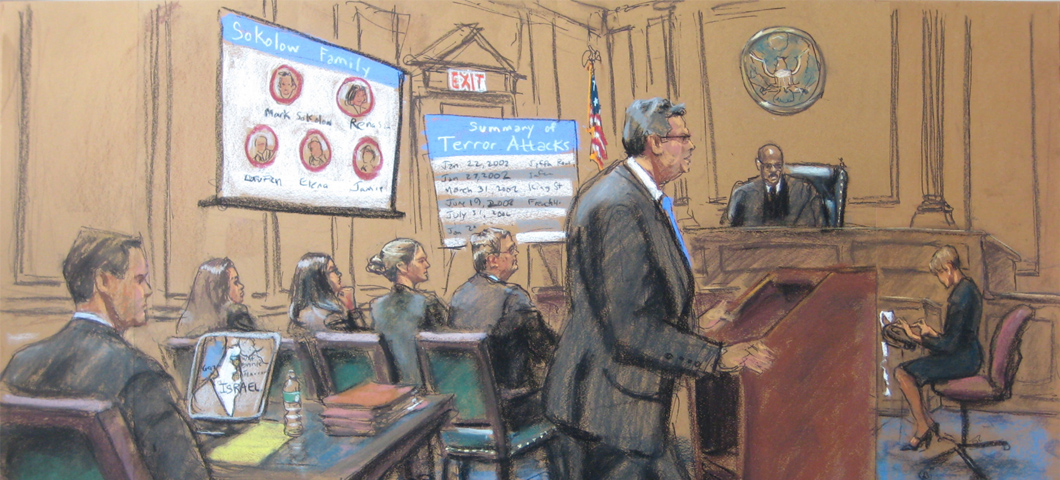Navigating the Complexities of Test Presentations: Tips for Seamless Shipment and Engaging Disagreements
In the world of legal proceedings, the art of trial discussion stands as an essential component of success. The complexities fundamental in test presentations need a delicate equilibrium of ability, approach, and skill.

Comprehending Trial Purposes
To successfully browse a test, it is crucial to have a clear understanding of the objectives that need to be accomplished. Prior to entering the court, legal groups have to specify their goals and preferred outcomes. These goals act as leading principles throughout the trial, shaping techniques and influencing decision-making processes.
Comprehending trial goals entails a comprehensive analysis of the case, legal precedents, and the client's best interests. Trial Presentations. It requires a meticulous evaluation of the facts, identifying essential problems, and expecting prospective difficulties. By setting measurable and details objectives, lawyers can tailor their presentations and debates to straighten with the wanted results
Furthermore, a clear grasp of test purposes allows legal teams to focus on proof, witnesses, and legal arguments effectively. It permits for the advancement of a meaningful narrative that resonates with the court and jury, strengthening the total instance presentation.

Organizing Evidence Efficiently
Having a clear understanding of trial objectives lays the structure for arranging evidence effectively in lawful process - Trial Presentations. By lining up the discussion of evidence with the desired outcomes of the test, legal teams can reinforce their disagreements and enhance their persuasiveness. One essential aspect of arranging evidence is categorization. Grouping evidence based on themes or significance to certain lawful elements can help simplify the discussion and make complicated details a lot more digestible for the court or jury.
One more key component in organizing proof efficiently is developing a rational circulation. Presenting proof in a coherent and consecutive fashion can help develop an engaging narrative that sustains the legal arguments being made. In addition, using visual help such as graphs, timelines, or graphes can better enhance the organization of proof and assist in clearing up complicated partnerships or sequences of events.
In addition, ensuring that all evidence provided is appropriate and permissible to the instance is vital. Inadmissible or irrelevant evidence can diminish the stamina of the disagreement and possibly damage the reliability of the here and now celebration. A careful evaluation and choice procedure ought to be embarked on to consist of only the most impactful and lawfully sound evidence in the trial presentation.
Crafting Persuasive Stories
Crafting compelling stories plays a critical role in providing persuasive debates during lawful procedures. When creating a narrative for a test presentation, it is essential to develop a clear storyline that highlights crucial points and attaches them in a coherent fashion. By weaving together proof, testimony, and legal debates into a influential and cohesive narrative, lawful professionals can properly advocate for their customers and increase the possibility of a desirable result in the court room.
Mastering Aesthetic Help
Effective use aesthetic help is essential to improving the influence and clarity of trial discussions. Aesthetic visit site aids, when used purposefully, have the power to streamline complex info, enhance key points, and leave an enduring impact on the discretionary. To master visual help in test discussions, it is crucial to guarantee that they are clear, succinct, and pertinent to the debates being made.
When incorporating visual aids, such as charts, timelines, charts, or pictures, into a trial presentation, it is important to keep them visually appealing yet expert. The visuals must match the verbal disagreements, supplying a graph of the info being gone over without overwhelming the audience with unnecessary details.
Moreover, experimenting the visual help ahead of time is important to guarantee a seamless delivery throughout the test. Acquainting oneself with the material, transitions, and timings of visit site each visual help can aid preserve the flow of the presentation and prevent technological problems that may occur.
Delivering Impactful Closing Disagreements
A compelling closing debate serves as the end result of a trial discussion, encapsulating the core story and persuading the judge and court towards a desirable decision. Begin by laying out the main debates that support your client's placement, emphasizing why the proof presented throughout the trial sustains your story.
Furthermore, integrating psychological allure can better reinforce your closing argument. Ultimately, a well-crafted closing argument ought to leave a long lasting perception, compelling the judge and jury to rule in your client's favor.
Conclusion
Finally, grasping trial presentations involves understanding objectives, organizing evidence, crafting stories, making use of aesthetic help, and supplying impactful closing disagreements. By carrying out these methods successfully, attorneys can provide their situation perfectly and make compelling arguments in the court room. It is critical to browse the intricacies of trial presentations continue reading this with accuracy and ability to accomplish success in legal proceedings.
By straightening the discussion of evidence with the desired outcomes of the test, legal teams can reinforce their disagreements and enhance their persuasiveness (Trial Presentations). To master aesthetic aids in trial discussions, it is vital to guarantee that they are clear, concise, and pertinent to the disagreements being made
A compelling closing debate serves as the culmination of a test presentation, encapsulating the core story and persuading the court and jury towards a positive decision. Begin by laying out the primary arguments that sustain your client's placement, highlighting why the proof provided throughout the trial sustains your narrative.In final thought, mastering test presentations entails understanding purposes, organizing proof, crafting narratives, using visual aids, and supplying impactful closing disagreements.
Comments on “Grasping the Art of Trial Presentations: Trick Techniques for Efficient Lawful Arguments”